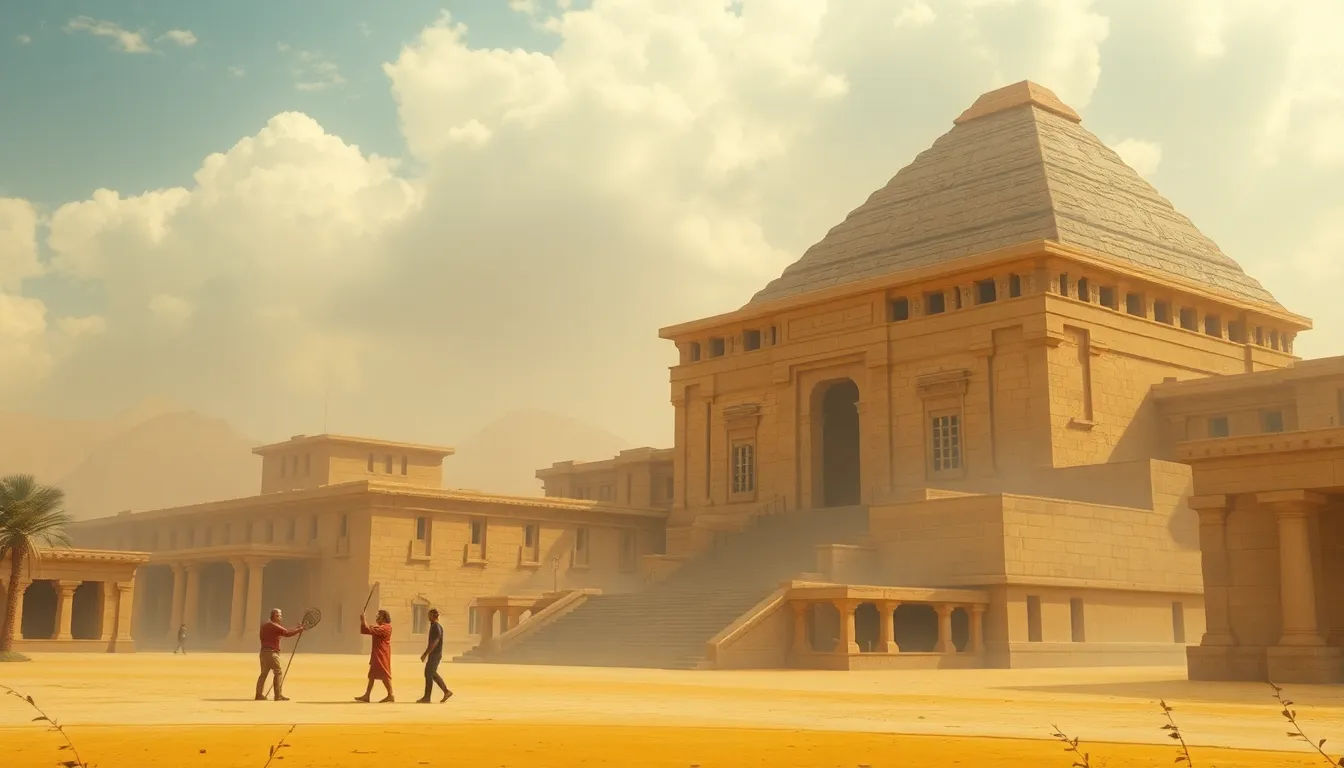The Birth of the Sacred City: Myths of Urban Life in Ancient Egypt
I. Introduction to Ancient Egyptian Urban Life
Urban life in ancient Egypt was characterized by a unique blend of social, political, and religious elements that defined the civilization. Cities served not only as centers of trade and governance but also as sacred spaces where the divine intersected with the mortal realm. The importance of cities in Egyptian civilization cannot be overstated; they were the heart of cultural life, showcasing the artistic and architectural achievements of the time.
Myths played a vital role in the urban landscape of ancient Egypt, as they provided explanations for the origins of cities, the nature of their sacredness, and the relationship between the people and their gods. This article explores various aspects of urban life in ancient Egypt, focusing on the myths that shaped the cities and their significance in the lives of the ancient Egyptians.
II. The Concept of Sacredness in Ancient Egyptian Cities
The relationship between the divine and urban spaces was deeply embedded in the Egyptian worldview. Each city was often associated with specific deities, and their temples served as the focal points of urban life. The major sacred cities included:
- Thebes: The city of Amun, a powerful center of worship and political authority.
- Memphis: Home to the god Ptah, it was a hub of art and architecture.
- Heliopolis: The city of the sun god Ra, renowned for its temples and cosmological significance.
Temples not only served religious purposes but also acted as centers of urban life and mythology, where rituals and ceremonies reinforced the sacredness of the city and its connection to the divine.
III. Creation Myths and Urban Origins
Creation myths held immense importance in the founding and identity of cities. These myths often narrated the origins of the world and the establishment of urban centers. Key deities played crucial roles in these stories, linking them to the cities:
- Atum: Often depicted as the creator god, associated with the founding of Heliopolis.
- Amun: His rise to prominence in Thebes established the city as a spiritual capital.
- Osiris: His mythological narrative influenced the agricultural cycles around the Nile, essential for urban sustenance.
The Nile River was central to these urban myths, as it provided the lifeblood of the civilization, shaping both the physical landscape and the cultural narratives that defined urban life.
IV. Rituals and Festivals in Urban Centers
Rituals and festivals were integral in reinforcing urban identity and community cohesion. These events often had deep mythological underpinnings, celebrating the gods and the cycles of nature. Major festivals included:
- The Opet Festival: Celebrated in Thebes, it involved a procession to renew the pharaoh’s divine connection.
- The Wepet-Renpet Festival: Marking the New Year, it was a time of renewal and fertility.
- The Sed Festival: Celebrating the pharaoh’s continued vitality and reaffirming his divine rule.
These events not only honored the deities but also served to unify the community, reinforcing social structures and shared beliefs among the urban populace.
V. The Role of Pharaohs and their Divine Mandate
Pharaohs were seen as both political and religious leaders, embodying the divine mandate to rule. Myths surrounding their divine right to govern were crucial in legitimizing their authority. The pharaoh’s connection to the gods was often depicted in monumental architecture, such as:
- Pyramids: Tombs that also served as temples to the gods, symbolizing the pharaoh’s journey to the afterlife.
- Temples: Structures dedicated to the gods, where the pharaoh performed rituals to maintain cosmic order.
- Obelisks: Tall stone pillars symbolizing the sun god Ra, marking significant urban spaces.
These architectural achievements reflected the intertwining of mythological themes with urban governance, establishing cities as sacred spaces under the watchful eye of the divine.
VI. Myths of Deities and their Urban Manifestations
Key deities associated with urban life were often represented in various forms throughout the cities. Each god had a specific role that influenced urban mythology and daily life. Notable deities included:
- Amun: Associated with Thebes, symbolizing power and protection.
- Isis: Goddess of motherhood and magic, often invoked for protection and fertility.
- Thoth: God of wisdom and writing, linked to the administration of urban governance.
These deities manifested in urban architecture, art, and public spaces, reflecting their significance in the lives of the ancient Egyptians and their belief systems. Stories of divine intervention and assistance in urban affairs further enriched the cultural fabric of ancient cities.
VII. The Intersection of Myth and Daily Life in Ancient Cities
Myths heavily influenced daily activities and social structures within ancient Egyptian cities. The roles of artisans, merchants, and laborers were often interwoven with mythological narratives that provided meaning to their work and social standing. For instance:
- Artisans viewed their craft as a divine gift, often invoking deities for inspiration.
- Merchants participated in trade festivals that celebrated the god of commerce, Ma’at, reinforcing ethical business practices.
- Laborers participated in community rituals that honored the gods, fostering a sense of belonging and purpose.
Urban myths served as a means of understanding social order and chaos, instilling values and norms that guided the behavior of individuals within the community.
VIII. Conclusion: The Enduring Legacy of Ancient Egyptian Urban Myths
The myths of urban life in ancient Egypt continue to influence modern perceptions of cities and their sacredness. Today, many urban spaces are still imbued with historical and cultural significance, reflecting the ancient belief in the divine presence in everyday life.
As we reflect on the interplay between myth, culture, and urban identity in ancient Egypt, we recognize the enduring legacy of these narratives. They remind us of the profound connections between humans, their cities, and the divine, shaping not only the past but also our understanding of urban life today.




